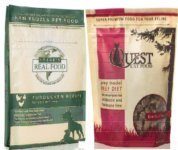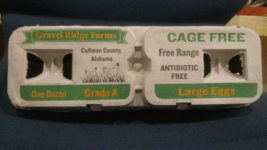Steve’s Real Food of Salt Lake City, Utah recalled one lot of 5lb Turducken Recipe, one lot of 2lb Quest Emu Diet, and one lot of 2lb Quest Beef Diet, due to their possible contamination with Salmonella and/or L. mono contamination. The Utah-based company said the voluntary recall of the nationally distributed cat and dog food products comes after health officials in Washington State notified the pet food maker that batch tested positive for contamination. Steve’s Real Food did conduct their own test which resulted in a negative result for both Salmonella and L. monocytogenes.@ https://www.fda.gov/Safety/Recalls/ucm619888.htm
ruth
Steve’s Real Food of Salt Lake City, Utah is voluntarily recalling one lot of 5lb Turducken Recipe, one lot of 2lb Quest Emu Diet, and one lot of 2lb Quest Beef Diet, due to their possible Salmonella and/or L. mono contamination.
ruth
Irish food safety chiefs have issued two recalls due to a deadly outbreak of Listeria monocytogenes. Harvest Moon Natural Hummus was alerted by the Food Safety Authority of Ireland (FSAI) to the detection of Listeria monocytogenes in two products, one batch of pesto and another batch of hummus. The Deli Green pesto was sold in Aldi shops across Ireland. Additionally, a recall was issued on one batch of Harvest Moon natural hummus. It was sold in shops across Ireland. Nine deaths in Europe have already been linked to the outbreak, including two in the UK, the European Food Safety Authority claims. @ https://www.irishmirror.ie/news/irish-news/listeria-ireland-food-recall-aldi-13216282
https://www.irishmirror.ie/news/irish-news/listeria-ireland-food-recall-aldi-13216282
ruth
{“post_id”:5181,”post_type”:”post”,”shortcode”:”peepso_postnotify”,”permalink”:”https:\/\/ask-bioexpert.com\/blog-post\/walmart-will-demand-that-its-suppliers-of-leafy-greens-use-its-blockchain-by-september-2019\/”}
ruth
The FDA announced that Gravel Ridge Farms recalled Cage Free Large Eggs due to a potential contamination with Salmonella. Reported illnesses at locations that used Gravel Ridge Farm Eggs caused the initiation of this recall. On 9/6/2018 the FDA notified Gravel Ridge Farms that the product they supplied may be contaminated with Salmonella. The products, packaged in a cardboard container and sold primarily in restaurants and retail stores in AL, GA, and TN, were distributed between 6/25/2018 and 9/6/2018. @ https://www.fda.gov/Safety/Recalls/ucm619886.htm
Gravel Ridge Farms is recalling Cage Free Large Eggs due to a potential contamination of Salmonella. The recall was initiated because reported illnesses were confirmed at locations using Gravel Ridge Farm Eggs, and we are voluntarily recalling out of an abundance of caution.



